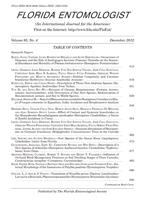At regional scales, leafcutter ant nest distribution is regulated by environmental factors such as vegetation, predators, soil and climate. This study investigated the effect of micro-climate on Atta sexdens (L.) nest distribution. It was carried out on a farm located on the Colombian Amazon River shore, where an extension of secondary forest was felled. Prior to felling, we located 20 A. sexdens nests and monitored them over the course of one year. Ten of the nests became exposed to the sun as a result of tree felling, and ten nests, located in neighboring unlogged forest, remained unaffected. Within six weeks, five of the exposed nests had moved to the cover of nearby vegetation patches and the remaining five nests had died. The ten unexposed nests remained active at the same location. In comparison with relocated nests, exposed nests experienced significantly higher air and soil temp, and lower soil moisture. The results of this study suggest that changes in micro-climate may trigger nest relocation and therefore play an important role in local A. sexdens nest distribution.
How to translate text using browser tools
1 December 2012
Leafcutter Ant (Atta sexdens) (Hymenoptera: Formicidae) Nest Distribution Responds to Canopy Removal and Changes in Micro-Climate in the Southern Colombian Amazon.
H. A. J. A. Van Gils,
C. Vanderwoude

Florida Entomologist
Vol. 95 • No. 4
December 2012
Vol. 95 • No. 4
December 2012
disturbance
disturbio
humedad del suelo
nest relocation
reubicación del nido
soil moisture
tala de árboles




